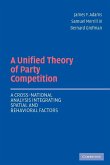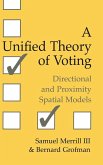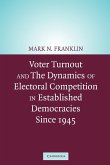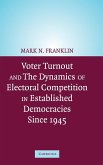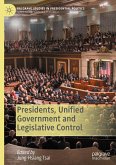Short description/annotation
This book explains how parties and candidates locate themselves on the Left-Right ideological dimension.
Main description
This book integrates spatial and behavioral perspectives - in a word, those of the Rochester and Michigan schools - into a unified theory of voter choice and party strategy. The theory encompasses both policy and non-policy factors, effects of turnout, voter discounting of party promises, expectations of coalition governments, and party motivations based on policy as well as office. Optimal (Nash equilibrium) strategies are determined for alternative models for presidential elections in the US and France, and for parliamentary elections in Britain and Norway. These polities cover a wide range of electoral rules, number of major parties, and governmental structures. The analyses suggest that the more competitive parties generally take policy positions that come close to maximizing their electoral support, and that these vote-maximizing positions correlate strongly with the mean policy positions of their supporters.
Table of contents:
1. Modeling party competition; 2. How voters decide: the components of the unified theory of voting; 3. Linking voter choice to party strategies: illustrating the role of non-policy factors; 4. Factors influencing the link between party strategy and the variables; 5. Policy competition under the unified theory: empirical applications to the 1988 French Presidential Election; 6. Policy competition under the unified voting model: empirical applications to the 1989 Norwegian parliamentary election; 7. The threat of abstention: candidate strategies and policy representation in U.S. presidential elections; 8. Candidate strategies with voter abstention in U.S. presidential elections: 1980, 1984, 1988, 1996, and 2000; 9. Policy competition in Britain: the 1997 general election; 10. The consequences of voter projection: assimilation and contrast effects; 11. Policy-seeking motivations of parties in two-party elections: theory; 12. Policy-seeking motivations of parties in two-party elections: empirical analysis; 13. Concluding remarks.
This book explains how parties and candidates locate themselves on the Left-Right ideological dimension.
Main description
This book integrates spatial and behavioral perspectives - in a word, those of the Rochester and Michigan schools - into a unified theory of voter choice and party strategy. The theory encompasses both policy and non-policy factors, effects of turnout, voter discounting of party promises, expectations of coalition governments, and party motivations based on policy as well as office. Optimal (Nash equilibrium) strategies are determined for alternative models for presidential elections in the US and France, and for parliamentary elections in Britain and Norway. These polities cover a wide range of electoral rules, number of major parties, and governmental structures. The analyses suggest that the more competitive parties generally take policy positions that come close to maximizing their electoral support, and that these vote-maximizing positions correlate strongly with the mean policy positions of their supporters.
Table of contents:
1. Modeling party competition; 2. How voters decide: the components of the unified theory of voting; 3. Linking voter choice to party strategies: illustrating the role of non-policy factors; 4. Factors influencing the link between party strategy and the variables; 5. Policy competition under the unified theory: empirical applications to the 1988 French Presidential Election; 6. Policy competition under the unified voting model: empirical applications to the 1989 Norwegian parliamentary election; 7. The threat of abstention: candidate strategies and policy representation in U.S. presidential elections; 8. Candidate strategies with voter abstention in U.S. presidential elections: 1980, 1984, 1988, 1996, and 2000; 9. Policy competition in Britain: the 1997 general election; 10. The consequences of voter projection: assimilation and contrast effects; 11. Policy-seeking motivations of parties in two-party elections: theory; 12. Policy-seeking motivations of parties in two-party elections: empirical analysis; 13. Concluding remarks.


